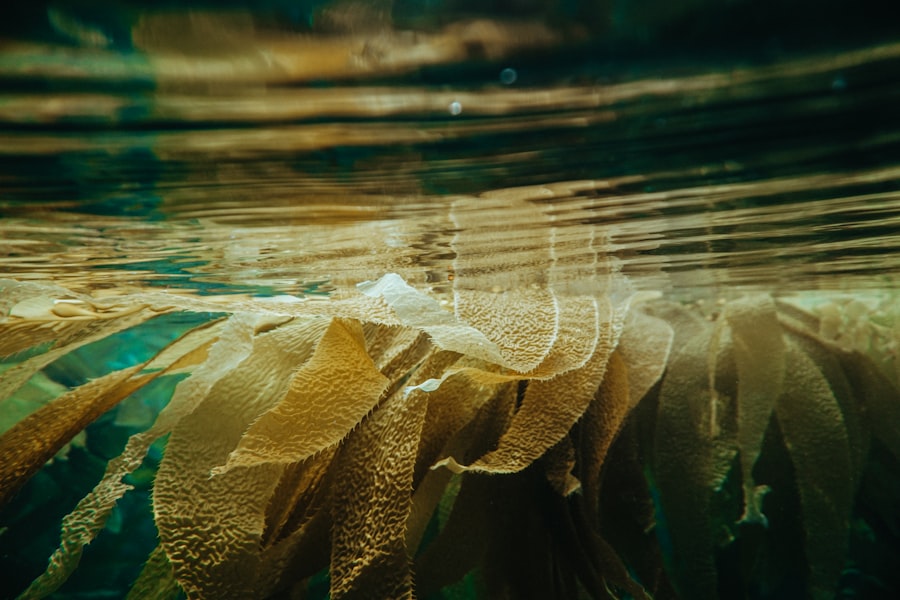Download links
How to install Exploring the Shallow Seas: 8k8 Diving Adventure APK?
1. Tap the downloaded Exploring the Shallow Seas: 8k8 Diving Adventure APK file.
2. Touch install.
3. Follow the steps on the screen.
Description
Shallow seas, often characterized by their vibrant ecosystems and stunning underwater landscapes, are a treasure trove for divers and marine enthusiasts alike. These bodies of water, typically ranging from the shoreline to depths of about 200 meters, are teeming with life and color. The sunlight penetrates these depths more effectively than in deeper waters, creating a kaleidoscope of hues that dance across coral reefs and sandy bottoms.
The interplay of light and water creates an enchanting atmosphere, where divers can witness the beauty of nature in its most vivid form. Coral reefs, seagrass beds, and rocky outcrops provide habitats for a myriad of marine species, making shallow seas a focal point for biodiversity. The allure of shallow seas extends beyond their visual appeal.
These environments serve as critical nurseries for many marine species, including fish and invertebrates. The calm waters and abundant food sources found in these areas allow juvenile organisms to thrive before venturing into deeper waters. Additionally, shallow seas often feature unique geological formations such as underwater caves, cliffs, and lagoons, which add to the intrigue of exploring these regions.
The combination of stunning visuals and ecological importance makes shallow seas a captivating destination for both recreational divers and researchers alike.
Key Takeaways
- Shallow seas are teeming with vibrant marine life and colorful coral reefs, making them a beautiful and captivating diving destination.
- An 8k8 diving adventure in shallow seas offers the opportunity to explore diverse underwater landscapes and encounter a wide variety of marine species.
- Divers can expect to encounter an array of marine life in shallow seas, including colorful fish, sea turtles, rays, and even the occasional shark or dolphin.
- To have a successful shallow sea dive, it’s important to plan ahead, stay aware of your surroundings, and follow proper diving protocols to ensure safety and enjoyment.
- Environmental conservation efforts in shallow seas are crucial for preserving the delicate ecosystems and protecting the marine life that calls these waters home. Additionally, shallow sea diving offers numerous benefits, including the opportunity to witness the beauty of underwater ecosystems, encounter diverse marine life, and contribute to conservation efforts.
What to Expect on an 8k8 Diving Adventure
State-of-the-Art Equipment for a Safe Dive
Participants can expect to be equipped with high-quality diving gear, including wetsuits, masks, fins, and tanks filled with breathable air.
Exploring the Underwater World
Safety is paramount, and divers are often briefed on the specific conditions of the dive site, including currents, visibility, and potential hazards. During an 8k8 diving adventure, divers will have the opportunity to explore various underwater features such as coral reefs, drop-offs, and submerged rock formations. Guided by experienced instructors, participants can navigate through these stunning landscapes while learning about the unique ecosystems they encounter.
A Holistic Experience with Educational and Fun Activities
The experience is not just about the dive itself; it often includes educational components that highlight marine conservation efforts and the importance of preserving these delicate environments. Divers may also have the chance to engage in activities such as underwater photography or snorkeling alongside marine life, enhancing their overall experience.
The Marine Life You’ll Encounter

One of the most exhilarating aspects of diving in shallow seas is the diverse array of marine life that can be encountered. From vibrant coral reefs to expansive seagrass meadows, these ecosystems are home to countless species that captivate divers with their beauty and behavior. Colorful reef fish such as clownfish, parrotfish, and angelfish dart among the corals, while larger species like barracudas and groupers can often be spotted patrolling their territories.
The presence of these fish not only adds to the visual spectacle but also plays a crucial role in maintaining the health of the reef ecosystem. In addition to fish, divers may encounter a variety of invertebrates that inhabit shallow waters. Sea turtles gracefully glide through the water, while rays can be seen gliding along the sandy bottom.
The intricate designs of starfish and sea urchins add a touch of artistry to the seafloor. Moreover, divers may come across fascinating creatures such as octopuses and cuttlefish, known for their remarkable camouflage abilities. Each dive presents a unique opportunity to observe these animals in their natural habitat, fostering a deeper appreciation for marine biodiversity.
Tips for a Successful Shallow Sea Dive
| Tip | Description |
|---|---|
| Check the weather | Before diving, make sure to check the weather forecast to ensure safe diving conditions. |
| Choose the right location | Select a shallow sea dive spot with clear visibility and minimal currents for a better experience. |
| Use proper equipment | Ensure you have the right snorkel, mask, fins, and wetsuit for shallow sea diving. |
| Buddy system | Always dive with a buddy to enhance safety and share the experience. |
| Stay relaxed | Keep calm and relaxed while diving to conserve energy and enjoy the underwater scenery. |
To ensure a successful shallow sea dive experience, preparation is key. First and foremost, divers should familiarize themselves with the specific dive site they plan to explore. Understanding the local conditions—such as water temperature, visibility, and potential currents—can significantly enhance safety and enjoyment during the dive.
Additionally, checking weather forecasts prior to diving can help avoid unfavorable conditions that may arise unexpectedly. Another important aspect is ensuring that all diving equipment is in good working order. Regular maintenance checks on gear such as regulators, buoyancy control devices (BCDs), and wetsuits are essential for safety.
Lastly, divers should remain mindful of their surroundings and adhere to responsible diving practices to protect marine life and habitats.
Environmental Conservation Efforts in Shallow Seas
The ecological significance of shallow seas has led to increased awareness and efforts toward environmental conservation in these areas. Organizations dedicated to marine conservation work tirelessly to protect fragile ecosystems from threats such as pollution, overfishing, and climate change. Initiatives often include establishing marine protected areas (MPAs) where fishing and other potentially harmful activities are restricted or regulated.
These MPAs serve as sanctuaries for marine life, allowing populations to recover and thrive. Community involvement plays a crucial role in conservation efforts as well. Local stakeholders, including fishermen and tourism operators, are increasingly recognizing the importance of sustainable practices that benefit both the environment and their livelihoods.
Educational programs aimed at raising awareness about marine conservation are being implemented in coastal communities, fostering a sense of stewardship among residents. By engaging local populations in conservation initiatives, there is a greater chance of ensuring the long-term health of shallow sea ecosystems.
The Benefits of Shallow Sea Diving

Escape and Mindfulness
For many individuals, diving serves as a means of escape from daily life, allowing them to connect with nature in a profound way. The tranquility of being submerged underwater can have therapeutic effects, reducing stress and promoting mental well-being.
Education and Conservation
The experience fosters mindfulness as divers become attuned to their surroundings, observing the intricate details of marine life and ecosystems. Moreover, shallow sea diving can be an educational experience that enhances understanding of marine biology and ecology. Divers often learn about the interdependence of species within these ecosystems and the impact human activities have on their health. This knowledge can inspire individuals to become advocates for marine conservation efforts in their communities.
Community and Adventure
Participating in organized dives or conservation projects can foster camaraderie among divers, creating lasting friendships built on shared experiences and a mutual passion for the ocean. From exploring vibrant coral reefs teeming with life to engaging in conservation efforts aimed at protecting these delicate ecosystems, shallow sea diving presents an array of opportunities for adventure and education. As awareness grows regarding the importance of preserving our oceans, divers play a crucial role in advocating for sustainable practices that ensure these beautiful underwater worlds continue to thrive for generations to come.
If you’re interested in exploring the underwater world, you may also enjoy reading about the benefits of using Waze GPS maps and traffic updates here. This article discusses how Waze can help you navigate through traffic and find the best routes to your destination. Additionally, if you’re into photography, Candy Camera offers various editing tools to enhance your photos based on your device here. And for those who enjoy creating short videos, Likee is a vibrant community where you can share your creativity and connect with others here.
FAQs
What is 8k8 Shallow sea diving?
8k8 Shallow sea diving is a type of diving that takes place in shallow waters, typically at depths of 8 to 8 meters (26 to 26 feet).
What are the benefits of 8k8 Shallow sea diving?
8k8 Shallow sea diving allows divers to explore marine life and underwater environments without the need for specialized equipment or extensive training. It is also a great way for beginners to experience diving in a safe and controlled environment.
What kind of marine life can be seen during 8k8 Shallow sea diving?
During 8k8 Shallow sea diving, divers can expect to see a variety of marine life such as colorful fish, coral reefs, and other underwater flora and fauna.
What equipment is needed for 8k8 Shallow sea diving?
Basic diving equipment such as a mask, snorkel, fins, and a wetsuit are typically used for 8k8 Shallow sea diving. However, specialized scuba diving equipment is not necessary for this type of diving.
Is 8k8 Shallow sea diving suitable for beginners?
Yes, 8k8 Shallow sea diving is a great option for beginners as it does not require extensive training or certification. It provides a safe and enjoyable introduction to the world of diving.
What are some popular destinations for 8k8 Shallow sea diving?
Popular destinations for 8k8 Shallow sea diving include tropical locations with clear, shallow waters such as the Caribbean, the Maldives, and the Great Barrier Reef in Australia.





